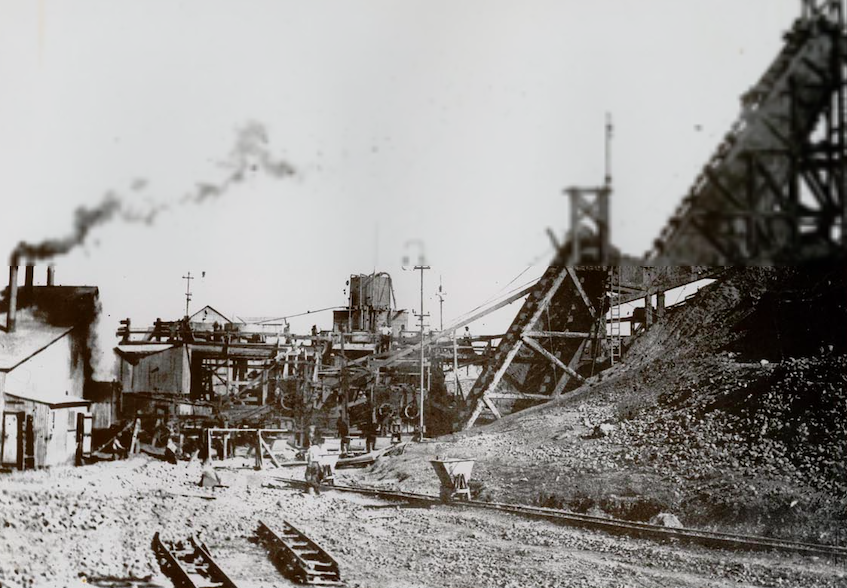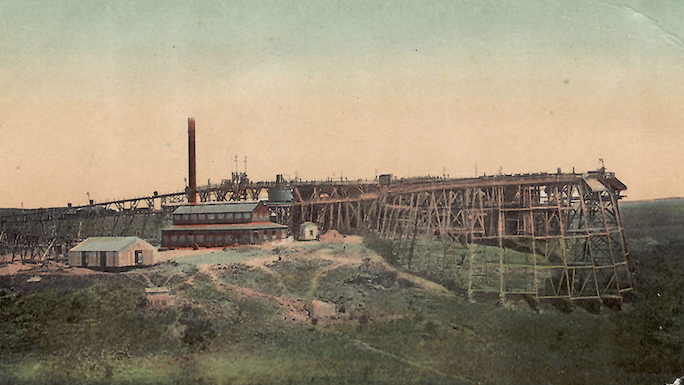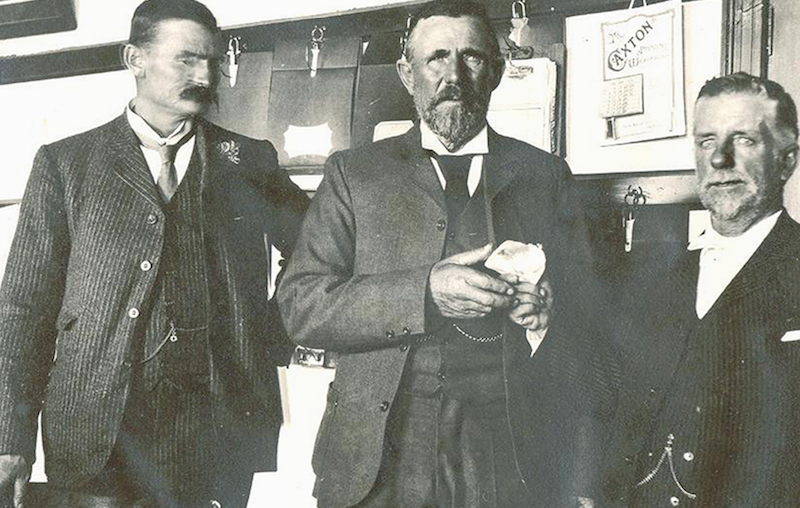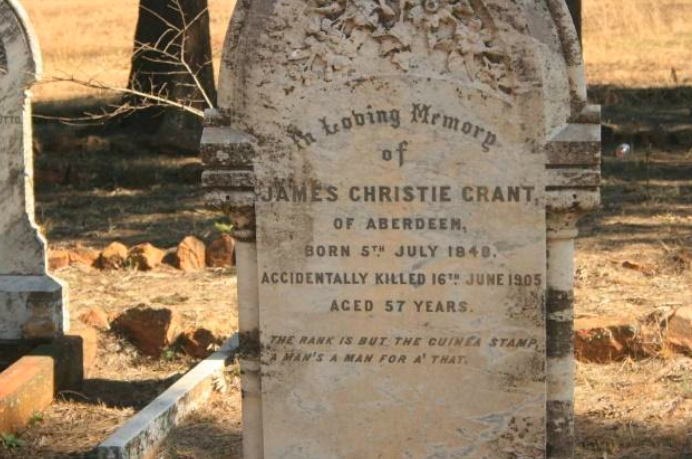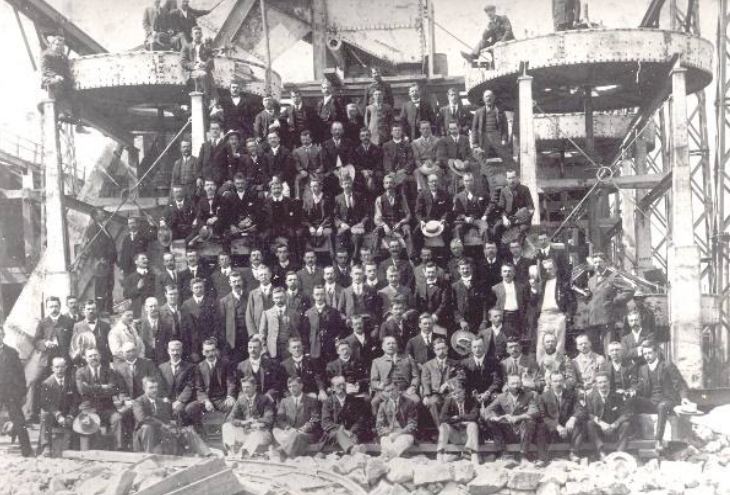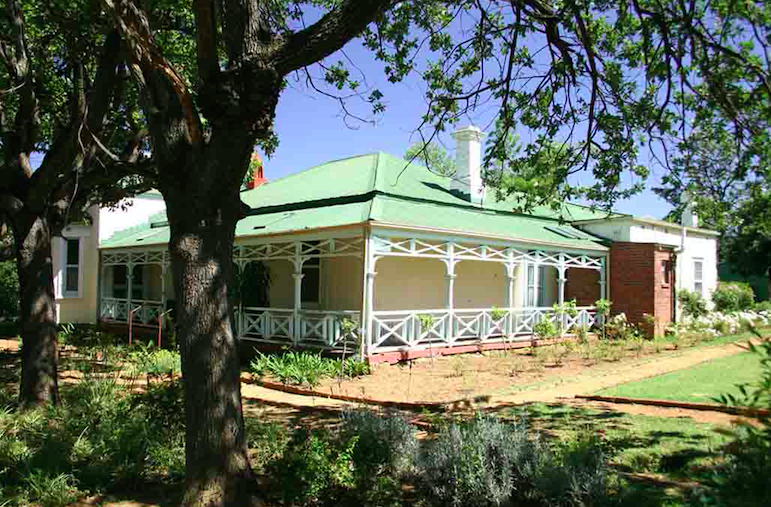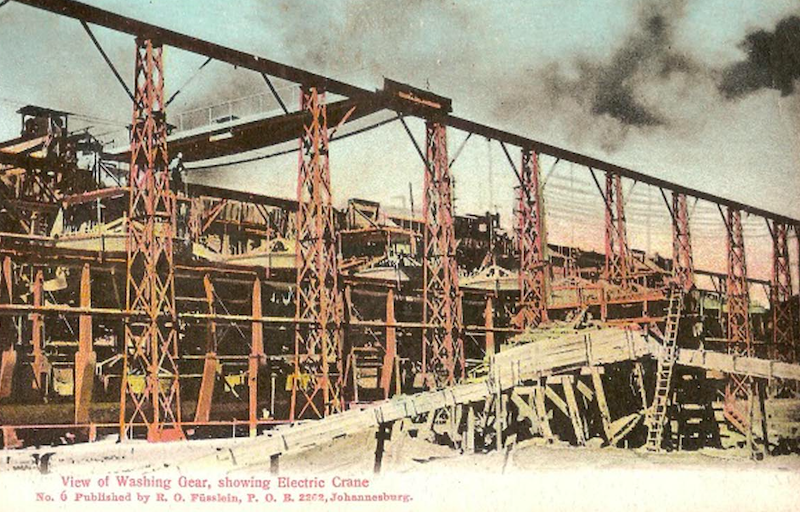
Disclaimer: Any views expressed by individuals and organisations are their own and do not in any way represent the views of The Heritage Portal. If you find any mistakes or historical inaccuracies, please contact the editor.
On the 16th June 1905, James Grant was killed in an accident at the Premier Mine (Transvaal) Ltd, now known as Cullinan Diamond Mine. He was contracted to the mine for the erection of number 3 gear (see main image). Grant was a native of Scotland. It is not known how he died or the nature of his injuries.
The Premier Mine opened in 1903 with the commissioning of Number 1 gear and shortly followed by Number 2 gear. The object of the gears was to reduce the size of the Kimberlite diamond bearing ground to a more manageable size as well as the cleaning of the Kimberlite. The next process would be to separate the diamonds from the Kimberlite employing a method of using the different specific gravities of the Kimberlite and diamonds. The success of Numbers 1 and 2 gears to liberate diamonds led to the mine to erect another gear called Number 3 gear and shortly after commissioning this gear a further gear, Number 4 gear was erected.
No 1 Gear (Cullinan Mine Archives)
Photograph of No. 2 gear reproduced from a postcard
Earlier in the year an event that would make the Premier Mine the most famous in the world occurred, the finding of the largest gem quality diamond ever found, the diamond weighed 3025 imperial carats and was later to be called the "The Cullinan Diamond". The diamond was named after the Chairman of the company, Thomas Cullinan. The mine to this day still produces diamonds of exceptional size, quality and colour.
The Cullinan Diamond (Cullinan Mine Archives)
An engineer named TG McLelland was to lead the construction of the gear at which James Grant would sadly loose his life. Grant was one of many men employed to construct the gear. He is buried in the Cullinan cemetery and the inscription on his tombstone shows that he was a native of Aberdeen. Shortly after his burial a collection was started by both the mines full time workers as well as those employed in the construction of the gear. The collection sheet being headed with the following "The widow of the late James Grant having been left in straitened circumstances, sympathisers are hereby invited to subscribe". A total of £138.8.6 was collected, an additional sum of 200 guineas (£220) was added to the sum by the Premier Mine. Before the money was handed over, Premier Mine had a letter from a Mr Nicholson who was the son-in- law of the deceased, asking for the money to be handed over to him for investment purposes as he had Power of Attorney for the widow. Mr Nicholson was at that time living in S.A.
Tombstone of James Christie Grant (John Lincoln)
On the 8th of September a letter to the chairman arrived from Mrs H Nichoison. In the letter she added that the 200 guineas awarded to her mother was practically the amount due to him as he had a 3 month contract with the company. She also complained that the invoice for the coffin was sent to her which she had to pay. She asked the company to consider some further compensation. The company replied that the coffin was ordered by Mr McLelland in his private capacity and was never in the hands of the General Manager. They replied and added that death annuls all contracts and that the 200 guineas was a fair and reasonable one. They also pointed out that all employees were insured by the company and that Mr Grant had failed to compete the proposal form and had he done so a further £1000 would have been accrued to his estate.
No 3 Gear Cullinan Mine. It is unknown whether this photograph was taken before or after Grant's death (Cullinan Mine Archives)
On the 29th September 1905 a letter arrived from Mrs LM Grant who was resident at 24 Albyn Grove, Aberdeen in which she thanked the company for their kind gift of 200 guineas. On the 15th Febuary 1906 further correspondence was received from Mrs H Nicholson asking for consideration of compensation for her mother due to death of her father. She further pointed out that if the company had paid the premium for the insurance her mother would be in a better financial situation. They replied that no further compensation will be made.
In a letter to the chairman dated 1st March 1906 Mrs Nicholson asked if no more compensation will be made, would the board grant her a house in the Cullinan so she can raise cows, poultry to supplement her income. Mrs Grant was now in SA and she would have to return to Scotland if no house could be granted. Mrs Nicholson was resident at 38 Bertram Road, Bertrams at the time. They replied that it would be impossible to grant her house but they had considered her plea and granted a further £200 which would be the final grant by the company. A final letter of thanks from Mrs Nicholson thanking the company ended the chain of communication.
It is not known if Mrs Grant returned to Scotland or if her daughter remained in SA. The mine now named Cullinan Mine, is still producing diamonds of exceptional quality, many of the buildings constructed at the time of the missive of Mrs Grant her daughter and the mine still exist. The village is a tourist venue because of these buildings. There are also museums of the mines and village’s past. The village also has an abundance of garden cafes, restaurants and accommodation including the Hotel built in 1906. Tours both onto the mine as well as historical are on offer.
McHardy House Museum (Cullinan Heritage Society)
If anyone has information about what happened to the Grant Family please get in touch - jlincon@iafrica.com
Comments will load below. If for any reason none appear click here for some troubleshooting tips. If you would like to post a comment and need instructions click here.

